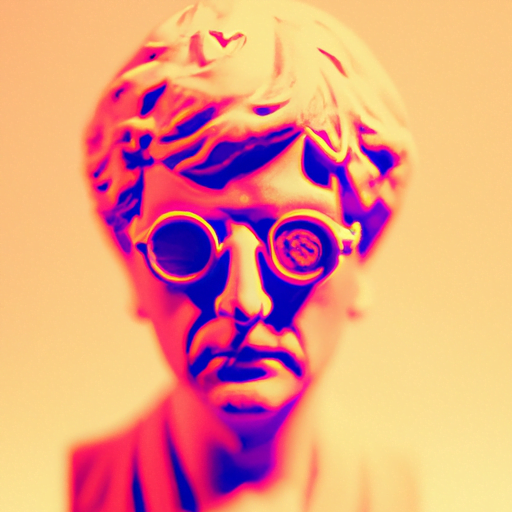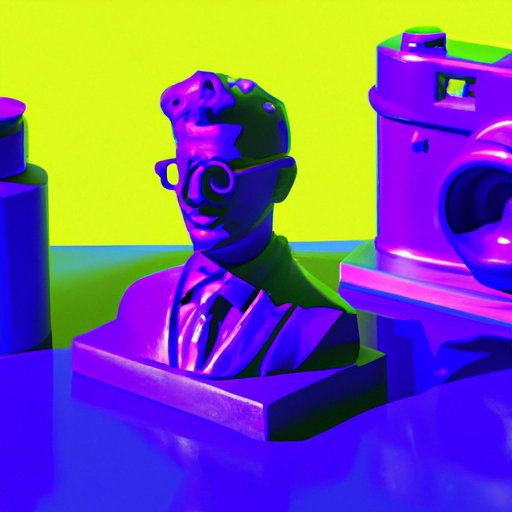
-
Table of Contents
- Exploring 3D Printing in Graphic Design
- The Rise of 3D Printing
- Applications of 3D Printing in Graphic Design
- Prototyping and Product Design
- Customized and Personalized Designs
- Artistic Expression and Sculptural Designs
- Case Studies: 3D Printing in Graphic Design
- 1. Nike’s 3D-Printed Shoes
- 2. Coca-Cola’s 3D-Printed Bottle
- The Future of 3D Printing in Graphic Design
- Integration with Virtual Reality
- Expanded Material Options
- Increased Accessibility and Affordability
- Summary
Exploring 3D Printing in Graphic Design

Graphic design is a field that constantly evolves with advancements in technology. One such innovation that has revolutionized the industry is 3D printing. This cutting-edge technology has opened up new possibilities for graphic designers, allowing them to bring their creations to life in ways that were previously unimaginable. In this article, we will explore the impact of 3D printing on graphic design, its applications, and the future potential it holds.
The Rise of 3D Printing
3D printing, also known as additive manufacturing, is the process of creating three-dimensional objects by layering materials on top of each other. It has gained significant popularity in recent years due to its versatility and accessibility. Initially used primarily in industrial settings, 3D printing has now become more accessible to individuals and small businesses, including graphic designers.
One of the key advantages of 3D printing is its ability to create complex and intricate designs with ease. Traditional manufacturing methods often have limitations when it comes to producing intricate shapes or designs, but 3D printing eliminates these constraints. This opens up a whole new world of possibilities for graphic designers, allowing them to create unique and visually stunning designs.
Applications of 3D Printing in Graphic Design
3D printing has found numerous applications in the field of graphic design. Let’s explore some of the key areas where this technology is making a significant impact:
Prototyping and Product Design
One of the most common uses of 3D printing in graphic design is for prototyping and product design. Traditionally, designers would create physical prototypes using various materials and techniques, which could be time-consuming and expensive. With 3D printing, designers can quickly and cost-effectively create prototypes of their designs, allowing them to test and refine their ideas before moving forward with production.
For example, a graphic designer working on a new packaging design can use 3D printing to create a physical model of the packaging, allowing them to assess its functionality and aesthetics. This not only saves time and money but also enables designers to make necessary adjustments and improvements early in the design process.
Customized and Personalized Designs
Another area where 3D printing is making waves in graphic design is in the creation of customized and personalized designs. With traditional manufacturing methods, mass production often limits the ability to create unique and personalized products. However, 3D printing allows designers to easily customize their designs to meet individual preferences and requirements.
For instance, a graphic designer can create personalized phone cases, jewelry, or even furniture using 3D printing technology. This level of customization not only adds value to the end product but also enhances the overall user experience. Consumers are increasingly seeking unique and personalized products, and 3D printing enables designers to meet these demands.
Artistic Expression and Sculptural Designs
3D printing has also opened up new avenues for artistic expression in graphic design. Designers can now create intricate and sculptural designs that were previously difficult to achieve using traditional methods. This has led to the emergence of a new wave of artists who are pushing the boundaries of what is possible in graphic design.
For example, graphic designers can create three-dimensional sculptures, installations, and even wearable art using 3D printing technology. This allows them to explore new forms, textures, and dimensions, resulting in visually stunning and thought-provoking creations.
Case Studies: 3D Printing in Graphic Design
Let’s take a look at a few case studies that highlight the impact of 3D printing in graphic design:
1. Nike’s 3D-Printed Shoes
Nike, a global leader in athletic footwear, has embraced 3D printing to create innovative and customized shoes. Their Flyprint technology uses 3D printing to create lightweight and breathable uppers for their running shoes. This allows for precise customization, ensuring a perfect fit for each individual.
By leveraging 3D printing, Nike has been able to push the boundaries of shoe design, creating unique and performance-enhancing products. This not only sets them apart from their competitors but also provides a personalized experience for their customers.
2. Coca-Cola’s 3D-Printed Bottle
Coca-Cola, a renowned beverage company, has also explored the possibilities of 3D printing in graphic design. They partnered with a 3D printing company to create a limited edition 3D-printed bottle to celebrate a special event. The bottle featured intricate designs and textures that would have been challenging to achieve using traditional manufacturing methods.
This collaboration allowed Coca-Cola to create a visually stunning and collectible product that generated significant buzz and excitement among consumers. It showcased the potential of 3D printing in creating unique and eye-catching designs.
The Future of 3D Printing in Graphic Design
As 3D printing technology continues to advance, its impact on graphic design is only expected to grow. Here are some potential future developments:
Integration with Virtual Reality
One exciting possibility is the integration of 3D printing with virtual reality (VR). Imagine a scenario where designers can create a 3D model in a virtual environment and then print it out in the real world. This would allow for a seamless transition between the digital and physical realms, opening up new possibilities for design exploration and collaboration.
Expanded Material Options
Currently, 3D printing primarily utilizes plastics and metals as printing materials. However, ongoing research and development are focused on expanding the range of materials that can be used in 3D printing. This could include materials such as ceramics, glass, and even organic compounds. The availability of a wider range of materials would enable designers to create even more diverse and innovative designs.
Increased Accessibility and Affordability
While 3D printing has become more accessible in recent years, there is still room for improvement. As technology advances and becomes more affordable, we can expect to see a wider adoption of 3D printing in graphic design. This would empower more designers to explore the possibilities of this technology and create groundbreaking designs.
Summary
3D printing has undoubtedly had a significant impact on graphic design. It has opened up new avenues for creativity, allowing designers to bring their ideas to life in ways that were previously unimaginable. From prototyping and product design to customized creations and artistic expression, 3D printing has revolutionized the field.
As technology continues to advance, we can expect to see even more exciting developments in the future. The integration of 3D printing with virtual reality, expanded material options, and increased accessibility are just a few of the possibilities on the horizon.
Graphic designers who embrace 3D printing and stay at the forefront of this technology will have a competitive
